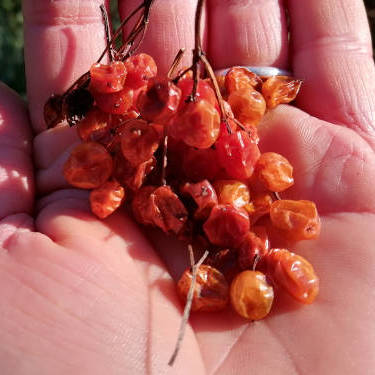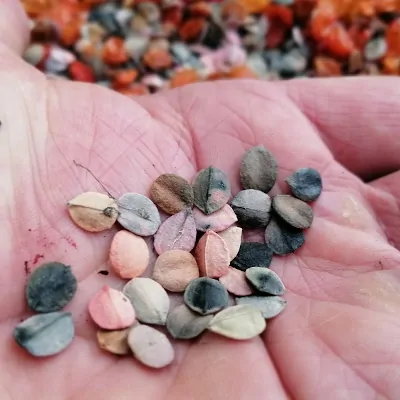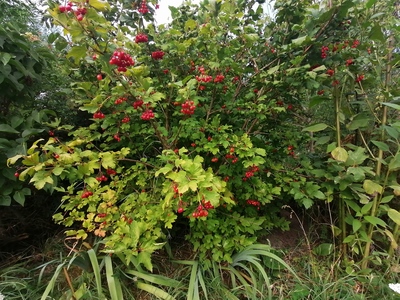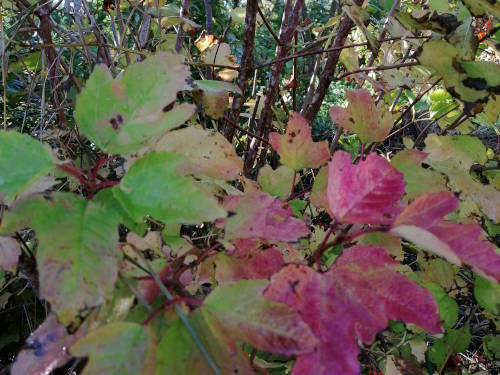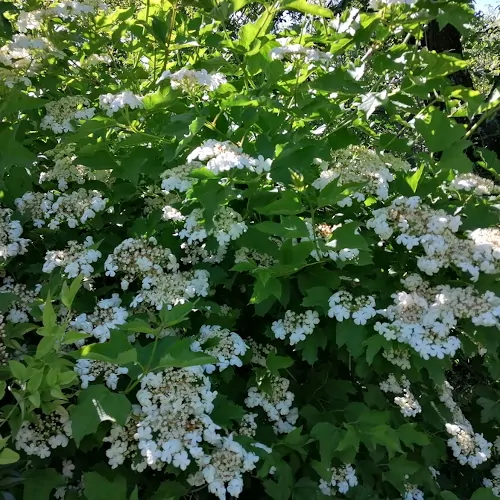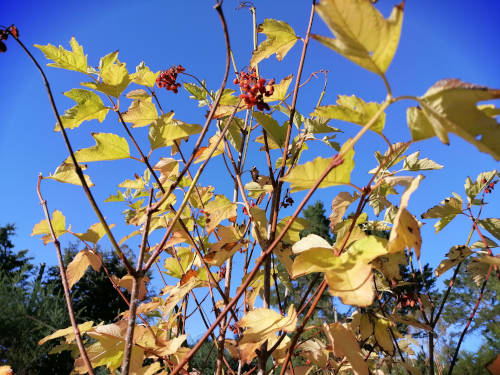Viburnum trilobum, commonly known as American cranberrybush or highbush cranberry, is a deciduous shrub native to North America. It is valued for its ornamental qualities, as well as its practical uses. Here are some of the uses and qualities of Viburnum trilobum plants:
- Ornamental Plant: Viburnum trilobum is a popular ornamental shrub in gardens and landscapes due to its attractive features. It has large, three-lobed leaves that turn vibrant shades of red, orange, and burgundy in the fall, adding a splash of colour to the landscape.
- Showy Flowers: In late spring to early summer, the shrub produces clusters of small, white flowers that have a delicate and pleasant fragrance. These flowers attract pollinators such as bees and butterflies.
- Attractive Berries: Following the flowers, Viburnum trilobum produces bright red berries that resemble cranberries, hence the common name "American cranberrybush." While the berries are edible, they are quite tart and are more commonly used for ornamental purposes.
- Wildlife Habitat: The berries of Viburnum trilobum are an important food source for various wildlife, including birds such as thrushes, making the shrub valuable for supporting biodiversity and providing for wildlife.
- Medicinal Uses: Some Native American tribes historically used the bark and roots of Viburnum trilobum for medicinal purposes. It was believed to have properties that could aid in treating certain ailments, though it's essential to consult a healthcare professional before using any plant for medicinal purposes.
- Culinary Uses: While the berries are edible, they are not commonly used for culinary purposes due to their tartness. However, some people use them for making jams, jellies, and sauces, often combined with sweeter fruits to balance the flavour.
- Drought Tolerance: Viburnum trilobum is relatively drought-tolerant once established, making it suitable for regions with periodic water shortages.
- Cold Hardiness: This shrub is cold-hardy and can withstand harsh winters, making it a viable option for northern climates.
- Erosion Control: Due to its dense and fibrous root system, Viburnum trilobum can help control erosion on slopes and along water bodies.
- Hedge and Screening Plant: Its dense growth habit and attractive foliage make it suitable for hedges and screens, providing privacy and visual barriers.
Overall, Viburnum trilobum is a versatile and attractive shrub that offers aesthetic appeal, wildlife support, and some practical uses. However, if you're considering using its berries for culinary or medicinal purposes, be cautious and ensure proper identification and preparation methods.
